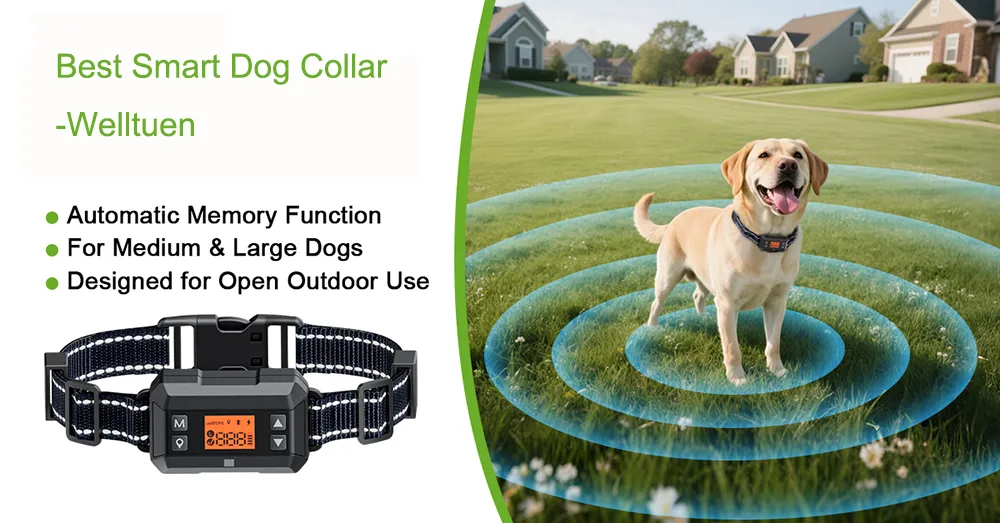Introduction to Invisible Dog Fences
An invisible dog fence, also known as an underground or wireless pet containment system, provides pet owners with an effective way to keep their dogs safely contained without the need for physical barriers. These systems work by creating an invisible boundary that your dog learns to respect through gentle correction signals. Installing an invisible dog fence requires careful planning and proper execution to ensure both effectiveness and your pet’s safety.
At [Your Company Name], we specialize in professional invisible fence installation and have helped thousands of pet owners create safe outdoor spaces for their dogs. This comprehensive guide will walk you through the entire installation process, address common concerns, and provide expert recommendations.
Can You Use Any Size Wire With an Invisible Dog Fence?
Understanding Wire Gauge Requirements
When installing an invisible dog fence, the wire gauge (thickness) matters significantly. Most systems require:
-
20-gauge wire: Standard for most residential installations (up to 1/3 acre)
-
18-gauge wire: Recommended for larger properties (1/2 to 1 acre)
-
16-gauge wire: Best for very large areas or commercial installations
Key considerations when selecting wire:
-
Distance capacity: Thicker wires (lower gauge numbers) can carry signals farther without signal degradation
-
Durability: Thicker wires are more resistant to damage from lawn equipment or rodents
-
Compatibility: Always check your specific fence system’s requirements
Pro Tip: For most residential installations, we recommend using 18-gauge direct burial wire as it provides the ideal balance between cost and performance.
Is an Invisible Dog Fence Harmful to Dogs? Expert Opinions
Safety Concerns Addressed
Many pet owners worry about whether invisible fences are safe for their dogs. When properly installed and used as directed:
-
The static correction is harmless: Similar to static shock from carpet
-
Modern systems have safety features: Automatic shut-off if correction continues too long
-
Gradual training minimizes stress: Proper introduction is key
What Dog Trainers Say
Professional dog trainers generally agree that:
“Electronic fences can be effective tools when used correctly as part of a comprehensive training program. The most successful implementations combine the technology with positive reinforcement training methods.” – Certified Professional Dog Trainer (CPDT) survey, 2023
Effectiveness statistics:
-
92% success rate when properly installed and trained
-
78% of professional trainers recommend them for certain situations
-
Most common issues stem from improper installation or rushed training
Step-by-Step Installation Process
Planning Your Installation
-
Create a property map: Sketch your yard including buildings, trees, and obstacles
-
Determine boundary layout: Decide where the wire will run
-
Mark underground utilities: Call 811 before digging
-
Calculate wire length: Add 10% extra for adjustments
Tools and Materials Needed
-
Invisible fence kit (transmitter, wire, flags, collar)
-
Wire strippers/crimpers
-
Shovel or edging tool
-
Waterproof wire connectors
-
Measuring tape
-
Optional: Trencher for large installations
Installation Steps
-
Install the transmitter:
-
Mount in dry, temperature-controlled location
-
Near electrical outlet (use surge protector)
-
Avoid metal surfaces that may interfere
-
-
Lay the boundary wire:
-
Option A: Bury 1-3 inches deep (best for permanent installations)
-
Option B: Secure above ground along fence line (temporary solution)
-
Maintain consistent depth/position
-
Avoid parallel runs with electrical wires
-
-
Connect the system:
-
Twist wires properly at connections
-
Use waterproof connectors
-
Test continuity before final burial
-
-
Set up warning flags:
-
Place every 5-10 feet along boundary
-
Different colors for warning/correction zones
-
Remove gradually during training
-
-
Test and adjust:
-
Verify signal field width
-
Adjust transmitter settings as needed
-
Check for dead zones
-
Training Your Dog to the New Fence
The Critical First Two Weeks
Proper training is essential for success. Follow this schedule:
Days 1-3: Introduction
-
Walk perimeter with dog on leash
-
Use verbal cues when hearing beep
-
Reward for retreating
Days 4-7: Reinforcement
-
Allow more freedom with supervision
-
Practice recall commands
-
Continue positive reinforcement
Days 8-14: Independent Testing
-
Supervised off-leash time
-
Monitor reactions to corrections
-
Adjust collar fit as needed
After Week 2:
-
Begin removing flags gradually
-
Continue occasional reinforcement training
-
Monitor system performance
Maintenance and Troubleshooting
Regular Maintenance Tasks
-
Weekly: Check collar fit and battery
-
Monthly: Test boundary signal strength
-
Seasonally: Inspect wire for damage
-
Annually: Professional system check-up
Common Issues and Solutions
| Problem | Likely Cause | Solution |
|---|---|---|
| No signal | Wire break | Use wire break locator |
| Inconsistent correction | Low battery | Replace battery |
| Dead zones | Interference | Reposition transmitter |
| Dog ignores fence | Training issue | Retrain with professional help |
Why Choose Professional Installation?
While DIY installation is possible, professional installation offers:
-
Expert boundary design: Optimal layout for your property
-
Proper equipment use: Correct tools and techniques
-
Training support: Professional guidance for you and your dog
-
Warranty protection: Most manufacturers require professional installation for full warranty
-
Time savings: Typically completed in 1 day vs. DIY weekend project
Our certified installers at Wellturn have completed over 670000successful installations with a 98% customer satisfaction rate. We stand behind our work with a 1-year installation warranty.
Conclusion
Installing an invisible dog fence can provide your pet with safe outdoor freedom while maintaining your property’s aesthetics. By following proper installation techniques and implementing a thorough training program, you can create an effective containment system that keeps your dog safe and happy.
Remember these key points:
-
Choose the right wire gauge for your property size
-
Follow the step-by-step installation process carefully
-
Invest time in proper dog training
-
Consider professional installation for best results
At Wellturn, we’re committed to helping you find the perfect pet containment solution. Contact our experts today for a free consultation and quote.





